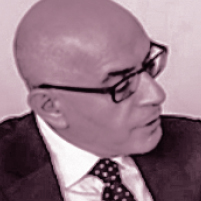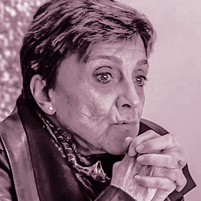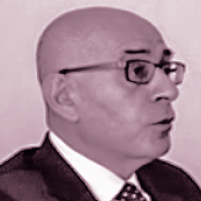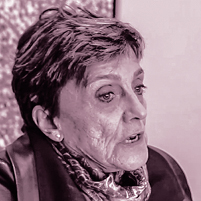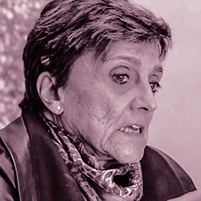Let’s look at the problems that linger on from the early years of the Republic, the dilemma that determines today’s cultural policies. The first one concerns the memory–identity relationship and the Republic’s failure to connect satisfactorily with its own classics and canons. It wasn’t able to connect because it lacked the experience to do so. Everyone was quite familiar with Divan literature and Ottoman music, but when the Republic decided to shift to Western music instead, it imposed the task on a group that became known as the “Turkish Five.” Despite the strict mandate, these composers pursued a powerful synthesis: They adapted folk songs into polyphonic compositions and wrote folk dances in the same manner. They pulled it off, and it was no mean feat. Necil Kâzım went all the way back to Itrî’s music from the 17th century for inspiration. This wasn’t the wrong approach, so where was the mistake? The mistake was ignoring our distinctive and original culture, and that’s what we did for awhile. But these examples show that it’s possible to overcome this mistake, and that our culture is Turkey’s great treasure. The West built on its religious musical tradition to advance all the way to Beethoven and Mozart. We left ours where it was and never sought to transform it. But today we have the wealth offered by two cultures. We can use them together. Not that Western classical music can be learned overnight. But then again, classical Turkish music is an acquired taste, too. Both Bach and Meragi appeal to the same taste and mentality. People aren’t born with a predilection for one over the other. Learning to enjoy music is a matter of culture, as is making music and moving from one style to another. The Republic attempted to do this, but was bound by its own radicalism. Adnan Saygun relates how he and fellow composers were gathered around the table asking themselves why they were there and how they were going to enact the reforms demanded of them. The telephone rang incessantly, he said; it was the Palace asking, “Is the reform done, is this music done, or not?” That was the nature of the need. I won’t call it an imposition, but it was continued insistence. Let me expand on this a little. The most frequently revisited theatrical character worldwide is Hamlet. Everyone does Hamlet. Everyone does ancient Greek classics, everyone does Sophocles and Euripides – what an inexhaustible source. But we don’t make enough use of all those plays by Abdülhak Hamit like Finten and Tarık that were partly inspired by the Western canon. I believe the time has come. Someone will emerge, someone with a new method and approach, and say, “Let’s take a look at them.” There are so many texts from the late 19th century, from the Constitutional Monarchy Era, that will lend themselves to a variety of interpretations and serve as source material. Let’s revisit them. I firmly believe there will be an explosion of interest very soon. I believe it because in the past decade Turkey has caught up with the rest of the world in contemporary art.
True.
Other than the size of venue, there’s absolutely no difference between art created in Turkey today and shown in Istanbul galleries and the art shown in New York galleries. Place these painters and artists anywhere else in the world, and they will stand on their own two feet, as they already do. The practice I’ve mentioned will also happen in time; the accumulation is nearly ready. As for amnesia, well, yes, it could have been different. But that’s history for you; you can’t change the past.
Now the second factor we’ll have to cover is this: Looking for the source of the problems in the past effectively dodges present-day issues. Two principal concepts define the cultural space in the world; one is multiculturalism, and the other is pluralism. If we were to take a stand against multiculturalism by imposing a monolithic, singular, monistic, and mononuclear culture, we would fall far behind socially and in solving our cultural problems, never mind reusing our heritage. It would create a great deal of social trouble. The concept of multiculturalism emerged for a reason: the need to find ways for different cultures to coexist sociologically in the wake of the collapse of the Berlin Wall, the breaking down of borders, the migrations and fluidity of the 1990s. Sadly, we’ve moved backwards in world politics today. Islamophobia, anti-migrant attitudes, racism and homophobia linger on at shameful levels despite everything. Not that any of it is reason to drop defending what’s right, defending a utopia.
Pluralism is a different concept, though.
The second side of this coin is pluralism. It’s obvious that a mononuclear world is no longer viable. That’s why these concepts must be kept in mind when determining policies in the sociological field or in art and culture. Conservatism is a right too. It’s one of the three or four most prominent political ideologies in the world. You can be conservative in your own life or political choices, but within a democratic structure and pluralist environment, you must respect the existence of others as much as your own existence. That’s what Turkey should be focusing on.
Debates over culture in Turkey have actually come to a point that could be called Kulturkampf. This term is the name given to the clash between the Catholic Church and secularists that raged in Europe during the 1870s. Later, the term became “culture wars” and was used to describe the tension between progressives and conservatives in the 20th century. This framework defines every aspect of Turkey’s current cultural state. Yet, the matter is not about religious tension; in our history, the dichotomy has taken the form of East vs. West or local vs. universal. That tension and struggle persist today.
The second reason why we can call our current cultural divide Kulturkampf is the part assumed by, or attributed to, religion. The East–West or local–universal tension that had been shaping our lives since the Reforms of 1839 seems to have taken on a secularist–pious form. These two poles have created a dichotomy in debates sanctioned by the state today as well as in society. How society will form and use its cultural arena will be determined by the direction this debate takes.
Very good. I’d like to suggest we turn to a slightly different topic: participation in art and culture. According to research, Turkish society doesn’t make much effort to engage with art and culture in order to acquire new knowledge and experiences. The market research company Ipsos polled 13,799 people in 34 provinces in 2016; the resulting Understanding Turkey Report found that 49 percent of those polled never go to the cinema, 39 percent don’t read books, 66 percent have never attended a performance like a concert, play or opera, 81 percent don’t play musical instruments, 57 percent don’t watch films or series on video or the internet, 47 percent don’t read magazines, and 86 percent have never attended a hobby course. The most popular activity is watching TV at 85 percent. The share of culture and entertainment in personal spending is less than three percent. Solving this problem of limited engagement and facilitating more active participation in social life requires structural change and individual effort. Every actor has a part to play here, including government, civil society, institutions, and individuals.
What sort of cultural policies do we need to address this situation? What can be done to ensure that cultural policies are inclusive? And which tasks, if any, fall to the private sector?
The only means of popularizing the arts is through education; and it starts in primary school. As far as I can see, Anatolians are good with their hands and work with their hands. They carve wood and chisel stone; when Germany was rebuilding in the 1960s, Turkish workers were invited, and they were highly valued; many returned quite rich because they were good carpenters and laborers. Get pupils in primary schools to draw, sculpt, create graphic design, or make music, and you popularize the arts in Turkey in the cheapest way possible. Children in the Netherlands, Finland or France start drawing at the age of three; here, someone makes it into architecture at university and has no idea what architecture is, has no idea what a house is, what a circle or a square is, and how to bring them together – because the entire education system is based on learning by rote. Such a system can’t teach problem-solving skills, or creative and constructive skills. University entrance exams are based on contrasts: true-or-false questions, right-or-wrong statements. If you use that approach, you won’t find a creative option or develop new ideas.
How do you disseminate culture? Theater groups used to tour Anatolia, and they were hugely important. In fact, Anatolia produced its own cultural expression in street theater and shadow puppets. Culture wasn’t all about miniatures and so on; the general public had their own local culture. What can government or municipalities do? They can take the folk culture that already exists at the local level and raise it to a higher level. Local government should spot, foster and elevate folk culture, and students should be trained accordingly. There’s no such instruction in primary education, and now there’s no philosophy taught in middle schools or high schools either. What happens when there’s no more philosophy? The ability to generate ideas and analytical thinking declines. I think that cultural policy is entirely geared towards a mono-dimensional culture, and the consequences of that are evident in education. Primary school has been reduced to four years, art classes have been minimized, and teachers aren’t trained. Nor are women trained, and they’re so crucial! Women’s contribution to raising children and therefore to culture is critically important. Because women are capable of making pottery, right? Women also work with their hands, dance, and play music. But these skills aren’t fostered.
Is there anything that only the private sector can do?
The private sector can use its own initiative but needs support, such as tax breaks or something else to pave the way.
Meanwhile, does the private sector support theater groups or cultural societies? Do small businesses erect a statue in some corner of the city or open a park? Generally, they focus their efforts on very limited areas. Is it possible to perform plays, create art, or play music on the street? When we think of the private sector, we shouldn’t just consider prominent business leaders or banks. But there’s no mechanism to encourage the support of businesses of every kind.
Interest in the arts and music should become a habit and a need, like the Istanbul Biennial. And who or what can make that happen? TV. I remember visiting Poland when TV was just starting. There was a workshop, and Polish artists said that TV executives were asking them how to disseminate the arts through TV. What does our TV do? Turkish TV is totally anti-culture.
If you go to the cinema – and I’ve given up, because the ads are so horrible, tasteless, barbaric and violent – excuse my vehemence, you’re under attack for a quarter of an hour. TV ads are the same. The most popular media seem to be working against art and culture, and yet, it could be the opposite; they could play such a valuable role in raising the public’s expectations of art and culture. Without encouragement, the private sector can only go so far. If you’re creating contemporary art, and the entire ideology is opposed to modernism, the masses will start to oppose you even if the government doesn’t, and the public will say, “They’re elitist, they’re not ordinary folk,” and so on.
If people who watch TV take such a dim view of the private sector’s efforts, the private sector will gradually withdraw from the cultural sphere. I’m not sure how many businesses actually do something for culture at present; I’m only aware of a handful. There’s a small section of society that appreciates them, but others oppose them. They regard them from afar as elitists, a group withdrawn into their ivory tower. Because when you open a museum or a gallery, you have to charge an entrance fee of 10 or 20 lira to keep it going. Government has to provide economic support and tax rebates to businesses. TV, meanwhile, should be promoting patrons of the arts, praising them, and supporting their efforts; they should present them as genuine champions of Turkish culture instead of focusing only on their socio-economic status.
The solution to cultural backwardness depends as much on society’s general relationship with the arts as it does on education. Music has a cultural past in Turkey; people go to concerts. In contrast, we don’t have a visual culture; there was architecture to a degree, and now it’s turned into showmanship or mere technique. Art constructs our world. Art is about people creating added value and constructing the world.
Istanbul Modern is a good example, because it’s a combination of private sector initiative and a major state contribution in the form of a venue.
